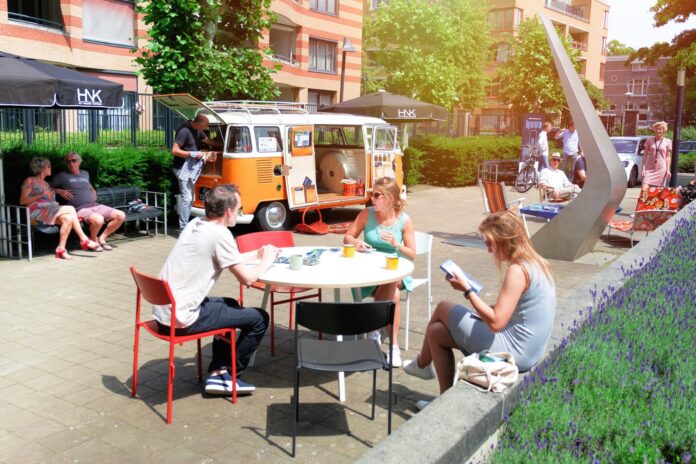The physical boundaries of office work have become increasingly flexible. Work is conducted at multiple locations outside the office, such as at clients’ premises, at home, in cafés, or when traveling. However, the boundary between indoor and outdoor environment seems to be strong and normative regarding how office work is performed. The aim of this study was to explore how office work may be conducted outdoors, understanding how it is being experienced by office employees and identifying its contextual preconditions.
Outdoor work activities were associated with many positive experiences by contributing to a sense of well-being, recovery, autonomy, enhanced cognition, better communication, and social relations, but also with feelings of guilt and illegitimacy. Conditions of importance for outdoor office work to happen and function well were found in the physical environment, where proximity to urban greenspaces stood out as important, but also in the sociocultural and organizational domains.
Kuo (2015) describes how a “myriad of studies” have linked contact with nature to human physical and psychological health outcomes, including decreased prevalence of cancer, cardiovascular disease, and depression, through multiple pathways, such as natural sights, natural sounds, and negative air ions; physiological and psychological states, such as relaxation, awe, vitality, and attention restoration. The potential benefits of spending time outdoors and having more contact with natural elements in daily work life are of great relevance for meeting the challenges of today’s knowledge work. Incorporating outdoor office work practices may thus potentially contribute to a more sustainable working life.
One form of bringing work outdoors was that of participants simply going outside by themselves, sitting down, doing things basically in the same way as inside of the office places, with or without their laptops. Sometimes these meetings were organized very much in the same way as indoor meetings with people mainly sitting down. At other times they also contained walk and talks, to and in a nearby park, as well as standing and sitting gatherings. Having a walk, in order to think, was another way of conducting work outdoors. The purposes were many and varied among participants. They took a “Think walk” in order to structure their thoughts, to plan, to analyze, to reflect, and solve a particular problem or to just let their mind wander, get inspired and develop their ideas.
It is… imperative to develop and enable the utilization of workspaces and work practices which support and replenish these cognitive capacities and support mental health and wellbeing. In the present project, results show that enabling and incorporating outdoor work among office workers/employees can serve such purposes (i.e., support different aspects of cognitive and mental health and functioning) and thus support a more sustainable work life, provided that qualitatively suitable outdoor spaces were available in close proximity to the workplaces.
Analysis
This research article is a great first dive into both the realms of office spaces and the realities of working outdoors. It’s comparable to the Dayton outdoor co-working opportunity because it breaks down different features of the office space, as well as the different ways that professionals work. The article touches on how standing to do work should be considered as much as sitting; movement such as walking is also productive among professionals to generate ideas, instead of staying in a stagnant position. The article also explains several means in which the outdoors helps boost mood and productivity. As the criteria for the Dayton project is for a post-pandemic world, this article helps emphasize how important interaction for people is, especially when getting work done. I think looking back on this research article will be useful through the duration of the project if I feel stuck, as they did great workshops in the same area of interest.




